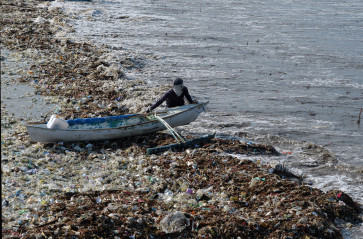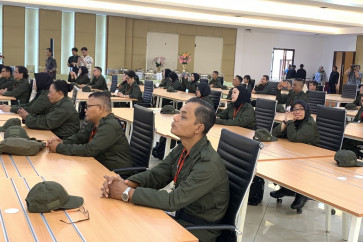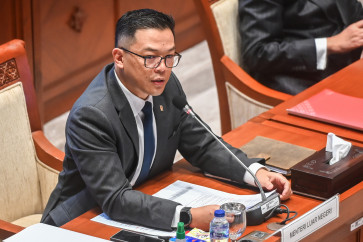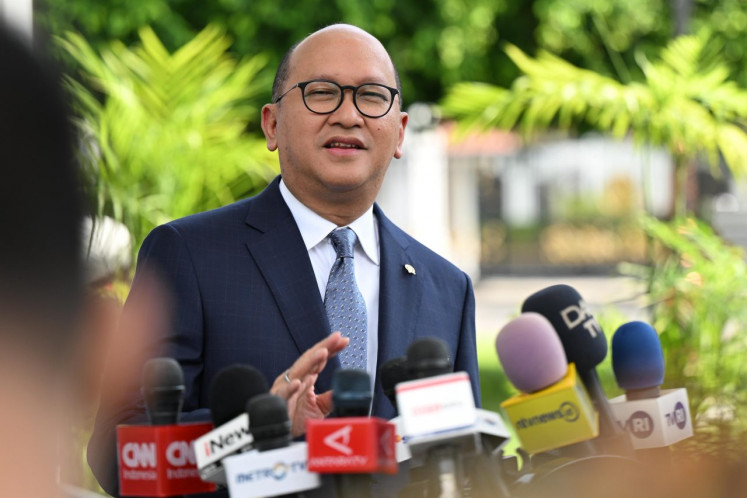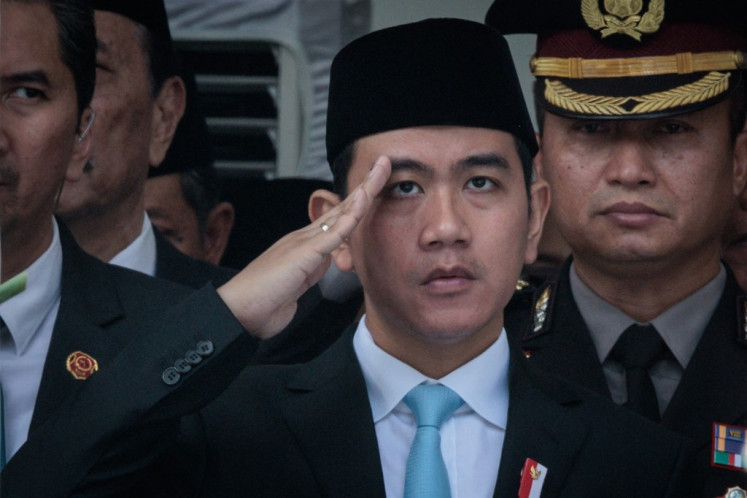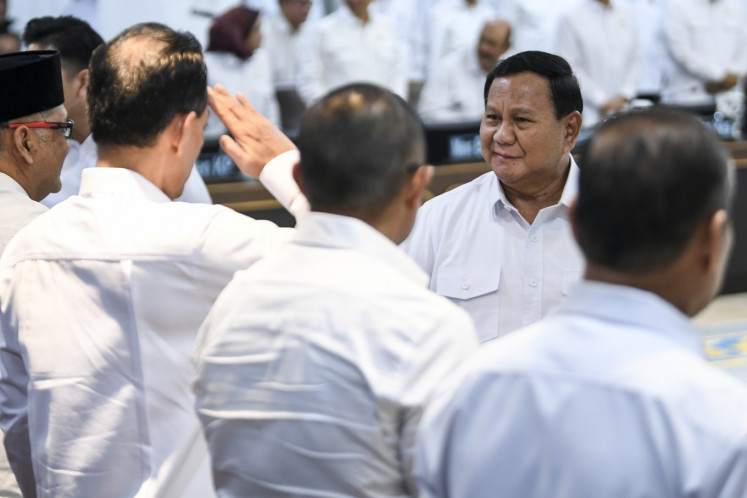Popular Reads
Top Results
Can't find what you're looking for?
View all search resultsPopular Reads
Top Results
Can't find what you're looking for?
View all search resultsSolar panel regulation to protect PLN, says expert
The latest issuance of a ministerial regulation on solar panels shows that the government is against the adoption of renewable energy technology because the regulation is hampering rather than accelerating the use of green energy, says an energy expert
Change text size
Gift Premium Articles
to Anyone
T
he latest issuance of a ministerial regulation on solar panels shows that the government is against the adoption of renewable energy technology because the regulation is hampering rather than accelerating the use of green energy, says an energy expert.
Fabby Tumiwa, the executive director of local energy think tank the Institute for Essential Services Reform (IESR), said the new regulation was a step back from the one issued by state electricity firm PLN.
“The [new ministerial] regulation was issued to protect PLN’s interests and it fails to see the potential of electricity generated from photovoltaic [PV] solar panels in Indonesia,” Fabby told The Jakarta Post on Sunday.
Last week, the government issued the long-awaited ministerial regulation on PV solar panels that lays out the guidance and requirements for those who want to install the panels at their homes or businesses.
Energy and Mineral Resources Ministerial Regulation No. 49/2018 on the utilization of solar panels in houses or industries has four key points.
First, the solar panel capacity must not exceed the existing electricity capacity of the house or building. Second, it regulates how solar panel owners can buy or sell electricity to PLN and the third was the obligation of users to alter electricity schemes from prepaid to post-paid.
The last is the additional costs solar panel owners have to pay if they are connected to PLN’s grid. This last regulation only applies to industries, not homeowners.
Fabby criticized the second point on electricity transactions with PLN, in which the price of electricity generated by solar panels is set at 65 percent of the regular tariff of the electricity from PLN at around Rp 1,400 per kilowatt hour (kWh).
“It [the 65 percent price policy] means that the public is subsidizing PLN by producing electricity from their solar panels. […] So, at this point the new regulation is not better than the previous PLN regulation, which gives a 1:1 ratio for electricity transactions,” he said.
Responding to the criticism, the Energy and Mineral Resources Ministry’s director for new and renewable energy, Harris, said the 65 percent price policy was set with a consideration that solar panel owners would only produce a small amount of electricity that could be sold to PLN.
“The maximum capacity of a solar panel is at 100 percent from total power generated by PLN to their building. Hence, most of the power generated from solar panels will be utilized for domestic use,” he added on Monday.
However, Harris acknowledged that the government composed the regulation to maintain PLN’s business interests.
The IESR previously calculated that the impact of solar panels on PLN’s revenue was not serious. For example, if there is a solar panel installation with a total capacity of 1 gigawatts (GW), it will only affect 0.42 percent of PLN’s total revenue in 2020.
The firm’s top officials have frequently said it would stick to its plan to use coal as its main fuel source until 2027. They also indirectly acknowledged that the existence of solar panels would disrupt the firm’s revenue.
As of April, Indonesia’s solar-based capacity only reached 0.3 GW, according to Energy and Mineral Resources Ministry data, with the untapped potential in the sector being around 200 GW.
Previously, Energy and Mineral Resources Minister Ignasius Jonan said the government was pinning its hopes on geothermal, hydro and solar energy to reach the target of 23 percent of renewable energy contribution to the energy mix by 2025.
“I have to admit that our goal to become a solar power generator is still far from ideal. […] How can a tropical country like ours not have an abundance of solar power? So now we will issue a regulation [to improve the use of the technology],” he said a day before the ministerial regulation took effect on Nov. 16.


